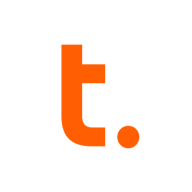

Teradata and Rivery are competing data management platforms. Teradata holds an advantage in scalability and performance for large enterprises, while Rivery provides a simpler and faster solution for quick deployment with minimal infrastructure.
Features: Teradata offers robust analytical capabilities, in-database machine learning, and strong data integration features. Its tools are designed for large-scale data operations needing extensive processing. Rivery provides a no-code data pipeline with real-time integration and automation, ideal for teams with limited technical expertise focusing on ease of use and speed.
Ease of Deployment and Customer Service: Rivery has cloud-based deployment with automated data workflows and agile integration enabling quick setup and ease of use, supported by dedicated customer service. Teradata's complex on-prem or hybrid deployments offer high customization options but require more time and resources.
Pricing and ROI: Teradata involves higher initial setup costs due to its infrastructure but offers substantial long-term ROI for large organizations. Rivery features flexible, subscription-based pricing with lower upfront costs, appealing to businesses seeking quick deployments and immediate ROI.

Rivery is a serverless, SaaS DataOps platform that empowers companies of all sizes around the world to consolidate, orchestrate, and manage internal and external data sources with ease and efficiency.
By offering comprehensive data solutions and partnering with complementary technology providers, including Google, Snowflake, Tableau, and Looker, Rivery enables data-driven companies to build the perfect ecosystems for all their data processes.
Teradata is a scalable data analytics platform designed to meet enterprise demands for large-scale data management and processing, focusing on performance, scalability, and security for complex query executions.
As a leading data warehousing solution, Teradata integrates advanced analytics enabling organizations to derive insights from massive datasets. It supports high-volume data workloads with its architecture optimized for analytical queries. Users benefit from its robust scalability, allowing seamless expansion as data grows. Teradata's SQL engine is compatible with a wide range of data types, ensuring flexibility in data analysis. With advanced security measures, it protects sensitive data across various environments, providing peace of mind to users handling critical information.
What are the most important features of Teradata?Teradata is widely used in industries like finance, telecommunications, and healthcare, where data-driven decisions are critical. Companies leverage its robust analytics capabilities to enhance customer experiences, streamline operations, and ensure compliance with regulatory requirements. In these sectors, quick access to data insights can significantly impact competitive advantage.
We monitor all Data Integration reviews to prevent fraudulent reviews and keep review quality high. We do not post reviews by company employees or direct competitors. We validate each review for authenticity via cross-reference with LinkedIn, and personal follow-up with the reviewer when necessary.